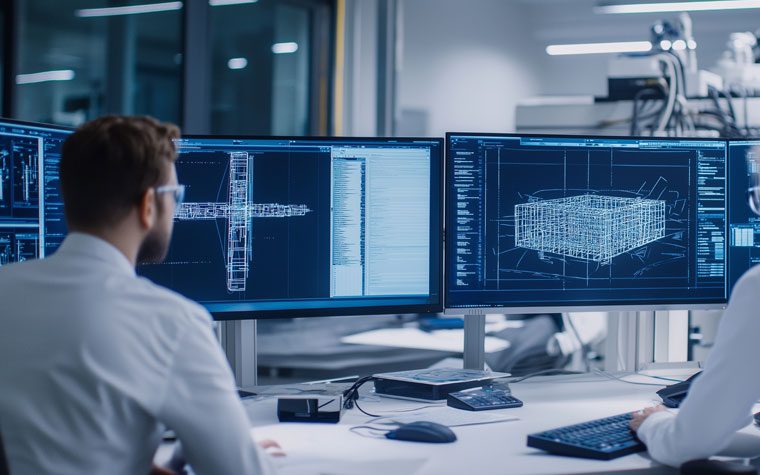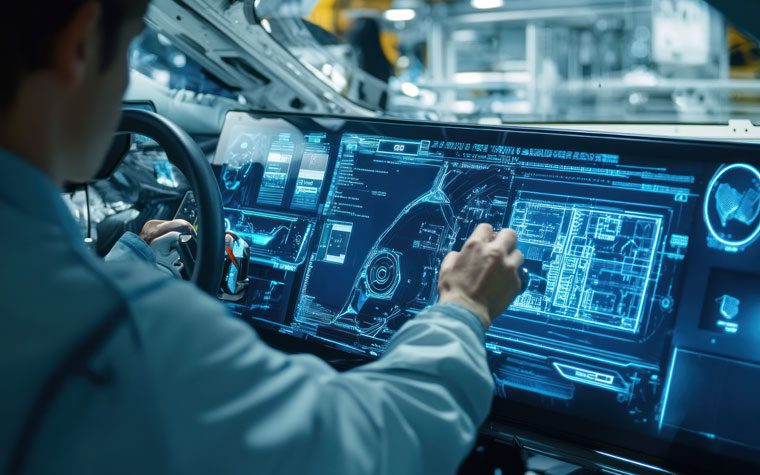
Best Construction Engineering Tools and Software for 2025
The construction industry in 2025 is at the forefront of technological innovation, leveraging advanced tools and software to streamline processes, enhance collaboration, and ensure precision in every project. With increasing project complexities and the demand for sustainable practices, the right tools are no longer optional but critical.
This blog explores the top construction engineering tools and software for 2025 and highlights how specialist engineering firms can assist MEP contractors, architectural firms, and general contractors in utilizing these solutions effectively.
What are the Top Construction Engineering Tools and Software for 2025?
- AutoCAD
A staple in the construction industry, AutoCAD continues to evolve with enhanced 3D modeling capabilities, better collaboration features, and AI-powered suggestions for design optimization. Its flexibility makes it ideal for creating precise designs, particularly in MEP and structural engineering.
- Revit
Revit remains the gold standard for Building Information Modeling (BIM). Its parametric modeling and integrated documentation tools help teams create accurate models for architecture, Interiors MEPF, and structural engineering. The 2025 version integrates AI for predictive clash detection and automated cost estimation.
- Navisworks
Known for its clash detection capabilities, Navisworks is essential for coordination in large-scale projects. Its real-time collaboration features ensure that all stakeholders are aligned, reducing errors and delays.
- Autodesk Construction Cloud Platform
Autodesk construction cloud facilitates seamless collaboration across teams. The 2025 updates include advanced project analytics and improved integration with IoT devices, ensuring that project managers have real-time insights into every aspect of the construction process.
- Procore
Procore is a comprehensive construction management platform that offers tools for project planning, financial management, and team collaboration. Its 2025 version focuses on sustainability metrics, helping contractors meet green building standards.
- Rhino and Grasshopper
For architectural firms focused on generative design, Rhino and Grasshopper provide unmatched flexibility in creating complex geometries. The integration of AI in 2025 enhances their capability to generate multiple design iterations quickly.
- PlanGrid
PlanGrid simplifies construction site management by digitizing blueprints and providing easy access to project data on mobile devices. The 2025 upgrades include enhanced AR capabilities for on-site problem-solving.
- Bluebeam Revu
Bluebeam Revu is essential for markups and sharing construction documents. The latest updates focus on improving cloud storage integration and providing better tools for multi-user collaboration.
- Primavera P6
For project scheduling, Primavera P6 remains indispensable. Its 2025 iteration offers enhanced AI-driven scheduling features, making it easier to anticipate and mitigate risks.
- AR/VR Tools
Tools like Unity Reflect and HoloLens have revolutionized visualization in construction. The integration of AR/VR helps teams conduct virtual walkthroughs, enhancing design validation and stakeholder engagement.
Emerging Trends in Construction Technology
- AI-Powered Tools: Artificial intelligence is reshaping construction with predictive analytics, generative design, and automated clash detection.
- Digital Twins: Creating real-time digital replicas of physical structures is enabling better facility management and predictive maintenance.
- IoT Integration: IoT devices provide real-time data on construction sites, improving safety, efficiency, and project tracking.
- Sustainability-Focused Tools: Software that tracks and optimizes energy usage, material sourcing, and waste management is gaining traction.
How Specialist Engineering Firms Can Help?
- Expertise in Tool Integration
Specialist firms like TAAL Tech bring a wealth of experience in using these tools for MEP design, Architectural + interior design, Structural design, clash detection, and construction planning. Their expertise ensures that tools are deployed effectively to meet project goals.
- Enhanced Collaboration
By acting as a bridge between contractors, architects, and engineers, these firms enhance collaboration using tools like Autodesk construction cloud platforms and Navisworks, ensuring all stakeholders are aligned.
- Cost and Time Efficiency
Specialist firms help identify the most efficient workflows and optimize resource allocation, reducing costs and project timelines.
- Focus on Innovation
With knowledge of emerging trends, these firms can advise on adopting cutting-edge technologies like AI-driven design or AR/VR visualization to gain a competitive edge.
Thus, the construction industry in 2025 demands a blend of advanced tools and skilled professionals to navigate its complexities. From BIM software to AI-powered solutions, the right tools can transform project outcomes.
Partnering with a specialist engineering firm ensures that MEP contractors, architects, and general contractors can maximize the potential of these technologies, achieving precision, efficiency, and innovation in their projects.


